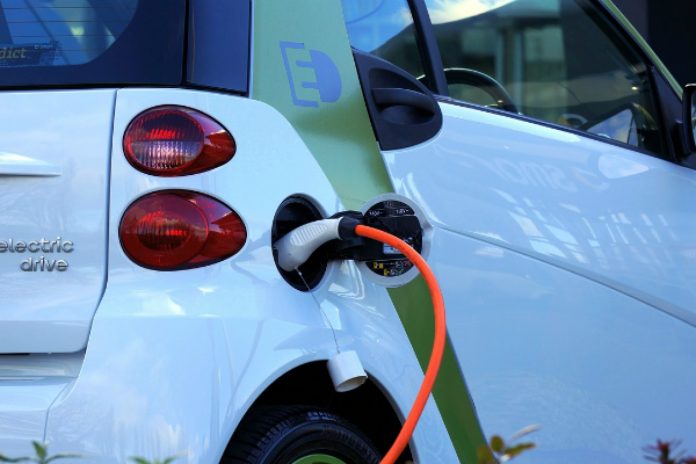Snapshot
- With innovations to develop EV charging infrastructure emerging, there is a need to look beyond lithium batteries, and focus on supporting research efforts.
For the electric vehicles (EV) dream to become a reality in India, there are two major requirements: one, the total cost must be low, which includes cost of lithium batteries, and two, there must be dependable charging infrastructure.
Prices of lithium-ion batteries have fallen by nearly 80 per cent in the past one decade, owing to technological advancements, from $600 per kilowatt-hour (kWh), to less than $200 per kWh.
India Energy Storage Alliance ( IESA) research says India needs to target at least 5-10 gigawatt-hours (GWh) by 2020. Only then would costs be feasible for India, as also meeting other concomitant goals like energy security, reduced import bill and lower carbon footprint through greater movement towards electric vehicles.
Setting up a cell manufacturing unit is expensive, and so far none of the big players who have shown interest, have committed to it. Until now, India has been importing cells and manufacturing battery packs. News reports of Tesla showing interest in setting up a gigafactory in India many years ago, or indigenous manufacture through Bharat Heavy Electricals (BHEL)-Indian Space Research Organisation (ISRO) alliance, or even Reliance or HFCL taking the plunge to produce batteries, keep surfacing periodically, but not enough to call it a shift to the next – read EV – level. Li-ion batteries are already deployed in telecom towers, diesel gensets, etc. IESA has for long been anticipating investments for gigafactories from two or three international majors in the area, but they have failed to fructify.
BHEL is in the process of going beyond such pilot projects in the manufacture of li-ion batteries, and talking to a US firm for a joint venture.
But after all what is said about the benefits of electric vehicles and their main fuel, lithium, perhaps there is still time to reflect if a switch to lithium-ion battery manufacturing is really the answer.
This is especially relevant against the backdrop of the huge costs involved, and the uncertainties galore relating to people’s preferences because of affordability and range anxiety, state transport corporations’ financial inadequacies, and the employment around the traditional automobile industry.
Let’s get back to lithium. Lithium reserves are found in South American countries Argentina, Chile and Bolivia, and given the concentration in just one region, factors like government instability or even natural disasters can result in supply constraints.
Estimates suggest that li-ion batteries will make up 90 per cent of the EV market by 2025. With many countries and companies scrambling to stay ahead in the race for reserving their share of these lithium reserves through partnerships and agreements, favourable terms of trade are prone to fluctuations in the long term. This has sent the demand for the mineral soaring, and common sense suggests that prices will follow suit. Further, at some point, oligopolistic pricing also cannot be ruled out, through collusion. This dependence thus, makes India’s current account deficit situation vulnerable again.
Recycling lithium is an option that can be used to counter these price fluctuations. Yet, for now, the same consideration weighs against recycling – that it is a highly expensive process, mainly because of the complex dismantling process that has to deal with different components. Companies would need to add to this cost of dismantling, costs and efforts of collection and recycling. That would require substantial monetary returns as an incentive.
Perhaps, in the Indian context, instead of focusing on lithium, why not look within?
Only recently, a Mumbai startup, Gegadyne Energy, was in the news for developing a battery that can charge EVs in 15 minutes. This battery uses super-capacitors, and the inventors say that their technology is scalable and more efficient than li-based batteries, and also cheaper. They have filed for an international patent which is pending.
Similarly, another Indian startup, Log9, had come up with metal-air – graphene-based – batteries that refuel with water and only require a change of an aluminium sheet to rework.
This idea of utilising such innovations was alluded to by Rahul Walawalkar, executive director, IESA, in a paper published in June 2018.
“India has a talent pool but lack on the R&D facilities for battery and cell manufacturing. There is a requirement for supply chain strategy. In the past 3 years, India has witnessed the creation of 100s of Accelerators / Incubators that are focusing on information technology/healthcare area. There is a need for a special incubator to nurture early stage electric vehicles and energy storage technology startups and provide them suitable facilities for accelerating their progress from lab to commercialization.”
Indigenous research by India’s bright minds, dedicated incubation for electric vehicles and battery technology, and a little bit handholding from research stage to commercialisation may be the answer to realising India’s EV dreams.









